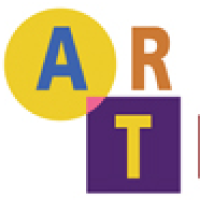
Final Report: Artful Thinking
PUBLISHED:AUTHORS: Shari Tishman, Patricia Palmer
Resource Summary
This report presents the philosophies, developed materials and research findings of
the Artful Thinking project at TCAPS. This overview chapter explains how the report
is organized and provides a brief history of the Artful Thinking project and the
relationship between Project Zero and TCAPS.
Chapter 2, The Artful Thinking Approach, describes the theoretical background of
thinking dispositions, presents a rationale for using art in the curriculum and provides
an in-depth description of the Artful Thinking program. This chapter also explains
the Artful Thinking palette – the central metaphor for the program – and thinking
routines, which are at the core of the Artful Thinking program.
Chapter 3, Instructional Components, provides one-page write-ups of the thinking
routines developed for the Artful Thinking program. They are organized by the six
dispositions: Reasoning, Perspective Taking, Questioning & Investigating, Observing
& Describing, Comparing & Connecting, and Finding Complexity.
Chapter 4, Teacher Resource Materials, contains a protocol developed for teachers
to use in their bi-weekly study groups to help them look at student thinking and
become better at spotting opportunities for thinking. The Think Track discussed in
this section is a tool designed to help teachers reflect on their routine use. The tool
was also used by the research team to track the frequency and trajectory of routine
use at Long Lake School. A case study of these teachers’ pattern of use is included in
this chapter.
The final section of Chapter 4, Institutional Structure and Support, includes ideas for
structuring the program and suggestions for sustaining and growing Artful Thinking
in a school.
Chapter 5, Assessment, describes the Artful Thinking stance on assessment and
contains a six-continua tool for helping teachers assess student thinking. This chapter
also describes revision of the district’s CAAP test to make this assessment more
thinking-centered.
Finally, Chapter 6, Research, describes research carried out in addition to the
development components described in the previous chapters. The first sections of
Chapter VI discuss the results of Concepts of Art data from teachers and students.
This instrument, which used a routine called I used to think, now I think, was
administered to participating teachers and to students in grades 5, 6 and 9 who were
involved in the program for between six months and two years.
The last section of Chapter 6 discusses Student Concept Map data. This was a written
activity administered to 4th, 5th and 6th grade students at the beginning and end of the
2004-2005 school year, and then again in March of 2006. The same test was also
administered at the same times to a commensurate control group of students.



-
-
-
-
-
-
Support PZ's Reach